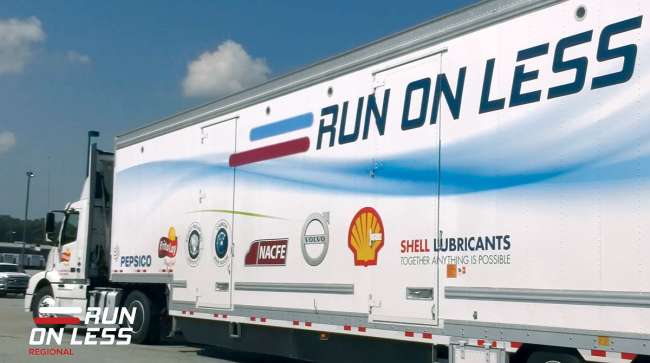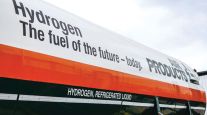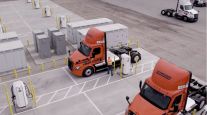Senior Reporter
NACFE 'Run on Less Regional' Results Prompt Feedback, Analysis

[Stay on top of transportation news: Get TTNews in your inbox.]
Industry feedback aimed at a report on regional trucking called for additional attention to the complexity of managing aerodynamic equipment in that operational environment, and generated new assumptions on the length of haul.
The North American Council for Freight Efficiency released the report on its Run on Less Regional showcase in June.
The 10 fleets in the 18-day event traveled 58,000 miles to make 237 deliveries, and achieved a cumulative 8.3 miles per gallon, or 103 ton-miles per gallon, compared with NACFE’s estimate of 6 mpg for the industry, according to the report.
“There has been some feedback like ‘hey NACFE, we get what you’re saying about fuel economy and there are all these billions of gallons of fuel we could be saving, but it’s hard in this market because if we put aerodynamics on a truck and then we move that truck and it just runs city routes, then we have lost our investment,’ ” Mike Roeth, NACFE’s executive director, told Transport Topics.

Roeth
NACFE recognized delivery times and having the equipment and driver home when needed was a higher fleet priority than how much fuel was used. It defined regional operations as occurring within a 300-mile radius from a home base.
The tractors either returned to the home depot every day or stayed within the radius but were out for multiple days.
“The proliferation and ages of trailers makes it difficult for fleets to keep the aero trailers with their most aerodynamic trucks,” the NACFE report found. “Most of the time it appeared that the trailers in this demonstration had at least side skirts on the trailers.”
Outside the showcase, three of the fleets use rear aerodynamic devices and five use gap devices. All 10 fleets put wheel covers on trailers.
“Some are challenging the regional haul premise because these trucks have to be utilitarian. We are wondering if the fleets could dedicate their specs to some of these runs and do better. Maybe for too long, they have had one spec do all of the different work,” Roeth said.
Meanwhile, a key conclusion of the report was that regional operations, with their consistent and predictable routes, are “fertile ground” for using alternative-fuel trucks by making it easier to install fueling infrastructure.
The report noted electric trucks are ideal for a return-to-base regional operation. At the same time, NACFE criticized itself for assumptions on the typical runs electric trucks make.
“The runs are longer runs than we originally thought. The fleets buy a truck and want to use it. They put in multiple runs, longer routes. One big ‘ah ha’ is drayage. The electric truck… people will say 150 miles is perfect for an electric truck. They don’t recognize that the fleet does two or three of those [drayage runs] a day, back to back to back. There’s just no time to charge. The range needs to be 450 miles, not 150 miles,” Roeth said.

COVID-19 has placed significant strain on many freight networks. So how are third-party logistics providers adapting to meet these challenges? Host Seth Clevenger chats with two 3PL executives who have had firsthand experience contending with this crisis. Hear a snippet, above, and get the full program by going to RoadSigns.TTNews.com.
“We can’t stop at 200-mile electric range like we are at with some of these early trucks. We need to get 400 to 500 miles somehow. Then that is the whole premise between hydrogen fuel cell and battery-electric trucks,” he said.
Some believe to get 400 to 500 miles on a battery-electric truck, you will require way too many batteries, adding weight. Others say we can figure out a battery to 400 to 500 miles, he said.
This kind of operational discussion is evolving after just a few years earlier when talk about conceptual electric vehicles focused on the high cost of batteries, and how to bring that down.
The 10 fleets participating in the regional showcase were C&S Wholesale Grocers, Hirschbach, Hogan Transportation, J.B. Hunt, Meijer, PepsiCo, Ploger Transportation, Schneider, Southeastern Freight Lines and UPS Inc. The vehicles were production model year 2019 and 2020 tractors, and both day cabs and sleepers. Nine of the tractors had diesel powertrains and one used compressed natural gas.
Want more news? Listen to today's daily briefing:
Subscribe: Apple Podcasts | Spotify | Amazon Alexa | Google Assistant | More




